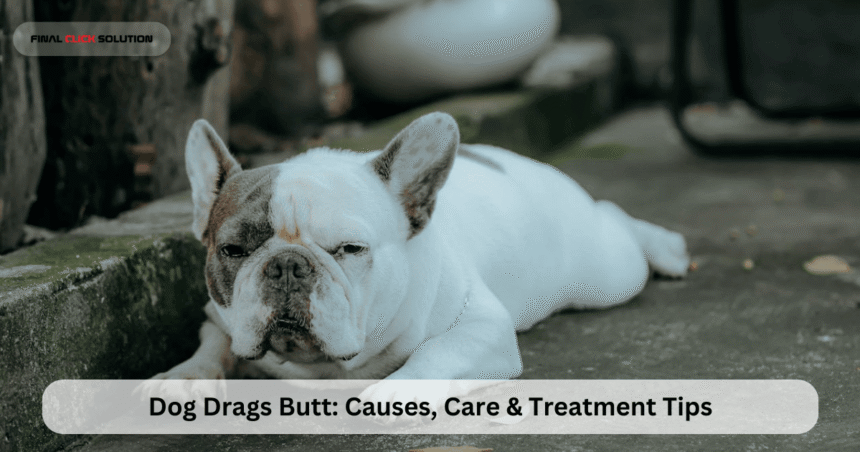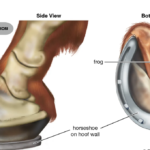Watching your beloved pet exhibit unusual behaviors can be concerning, especially when you notice your dog drags butt across the carpet or grass. This action, often referred to as scooting, is a common sight among dog owners, but it typically signals some underlying discomfort. Whether it’s a sudden episode or a recurring habit, understanding why your dog drags butt is crucial for ensuring their health and well-being. In this article, we’ll explore the reasons behind this behavior, potential causes, and steps you can take to help your furry friend. By the end, you’ll be equipped with the knowledge to address the issue effectively.
Why Do Dogs Drag Their Butts? Unpacking the Mystery
One of the most frequent questions from pet owners is, why do dogs drag their butts? This instinctive response is usually a dog’s way of relieving irritation, itchiness, or pain in the anal area. Dogs have a unique anatomy that includes small sacs on either side of the anus called anal glands. These glands produce a pungent fluid used for scent marking during defecation. Normally, the pressure from passing stool expresses these glands naturally. However, when something disrupts this process, discomfort builds up, prompting the dog to drag its rear end along the ground in an attempt to self-soothe.
Scooting isn’t just a quirky habit; it’s a symptom that warrants attention. Small breeds like Chihuahuas, Dachshunds, and Poodles are particularly prone to this issue because their smaller body size can lead to inefficient gland expression. Larger breeds aren’t immune, though—any dog can experience this if factors like diet, health conditions, or environmental irritants come into play. If left unaddressed, what starts as occasional dog dragging butt on floor can escalate into more serious health problems, including infections or chronic pain.
Common Causes of Dogs Dragging Butt
Dogs dragging butt can stem from a variety of causes, ranging from benign to more serious medical conditions. Let’s break down the primary culprits to help you identify what’s happening with your pup.
1. Anal Gland Issues: The Top Culprit
The most common reason for a dog drags butt is problems with the anal glands. These sacs can become full, impacted, or infected, leading to swelling and intense discomfort. When the glands don’t empty properly—perhaps due to soft stools, obesity, or anatomical quirks—the fluid builds up, creating pressure and an itchy sensation. Your dog may then resort to scooting to manually express the glands by rubbing against surfaces.
In severe cases, an anal gland abscess forms, where infection causes pus-filled swelling near the anus. Signs include redness, foul odor, bloody discharge, and reluctance to sit. Perianal fistulas, more common in breeds like German Shepherds, involve chronic inflammation leading to ulcer-like openings around the anus. Tumors in the anal glands, though rare, can also cause this behavior, often accompanied by increased thirst or urination.
If you notice your dog rubbing butt excessively or licking the area, anal gland trouble is likely at play. Early intervention is key to prevent complications like rupture or sepsis.
2. Parasites: Unwelcome Guests Causing Irritation
Intestinal parasites, particularly tapeworms, are another frequent cause of why a dog drags butt. These worms live in the dog’s intestines and shed segments that resemble grains of rice around the anus, especially after defecation. The segments can cause itching as they dry and stick to the fur, prompting the dog to scoot or drag its rear to dislodge them.
Other parasites like roundworms or hookworms can indirectly contribute by causing diarrhea, which irritates the anal region. Puppies and dogs with outdoor access are more susceptible. Visible signs include scooting, excessive anal licking, and sometimes weight loss or a pot-bellied appearance. A simple fecal test at the vet can confirm parasites, and deworming medications like praziquantel provide quick relief.
3. Allergies and Skin Irritations
Allergies are a sneaky cause of dogs dragging butt, often manifesting as intense itching around the rear end. Food sensitivities to ingredients like wheat, dairy, or chicken can lead to inflammation in the digestive tract, affecting the anal area indirectly. Environmental allergens, such as pollen or dust mites, or flea bites, can cause localized dermatitis.
If your dog has a history of hot spots or red, inflamed skin, allergies might be the reason. Dog dragging butt on floor in this context is an attempt to scratch the itch. Breeds with sensitive skin, like Bulldogs or Retrievers, are more prone. Symptoms may include paw chewing, ear infections, and general restlessness. An elimination diet or allergy testing can pinpoint the trigger.
4. Fecal Soiling and Hygiene Problems
Sometimes, the issue is as straightforward as poor hygiene. Dogs with long, dense fur around the rear—think Shih Tzus or Afghan Hounds—can trap feces, leading to matting and irritation. Diarrhea exacerbates this, leaving residue that ferments and causes itchiness. A dog rubs butt in this scenario to clean itself, but it often worsens the problem by spreading bacteria.
Obesity can contribute too, as excess weight makes it harder for dogs to groom themselves properly. Regular bathing and trimming the fur around the anus can prevent this, but persistent soiling might indicate dietary issues or gastrointestinal problems.
5. Infections and Other Medical Conditions
Beyond glands and parasites, infections like urinary tract infections (UTIs) can cause discomfort that radiates to the rear, leading to scooting. Rectal prolapse, where the rectum protrudes through the anus due to severe straining, is a medical emergency. This often follows bouts of diarrhea or constipation and appears as a pink, tube-like mass.
Foreign objects, such as grass seeds lodged in the fur, or wounds from fights can also prompt a dog drags butt. In rare cases, tumors or polyps in the rectal area cause similar symptoms. Always rule out these with a vet visit if scooting persists.
Signs That It’s Time to See a Vet
Not every instance of your dog drags butt requires immediate panic, but certain red flags demand professional attention. If the behavior is frequent (more than once a day), accompanied by whining, blood in the stool, swelling, or a foul discharge, head to the vet promptly. Other concerning symptoms include difficulty defecating, lethargy, vomiting, or loss of appetite. Puppies, seniors, or dogs with pre-existing conditions are at higher risk, so err on the side of caution.
A veterinary exam typically involves a physical check of the anal area, possibly manual expression of the glands, and diagnostic tests like fecal analysis or blood work. Early diagnosis prevents escalation— for instance, an untreated abscess can lead to systemic infection.
Effective Treatments for Dog Butt Scooting
Treatment depends on the underlying cause, but most cases are manageable with a combination of home care and veterinary intervention.
For anal gland issues, vets often express the sacs manually during a visit—a quick procedure that provides instant relief. If infection is present, antibiotics and pain relievers are prescribed. Chronic problems might require dietary changes, such as adding fiber-rich foods like pumpkin or psyllium to firm up stools and promote natural expression. In extreme cases, surgical removal of the glands (anal sacculectomy) is considered, though it’s a last resort due to potential incontinence risks.
Parasite treatments are straightforward: a single dose of dewormer eliminates tapeworms, with follow-up to prevent reinfestation via flea control. Allergies may involve switching to a hypoallergenic diet for 8-12 weeks or using medicated shampoos. For soiling, gentle cleaning with pet-safe wipes and regular grooming sessions work wonders.
Home remedies can support vet care. Warm compresses soothe swelling, and over-the-counter fiber supplements like Glandex help with gland expression. However, avoid forcing expression at home unless trained, as it can cause injury. Probiotics can aid gut health, reducing diarrhea-related issues.
Prevention Strategies: Keeping Your Dog Comfortable
Preventing your dog drags butt starts with proactive care. Maintain a balanced, high-fiber diet to ensure firm stools that naturally express the glands. Aim for 2-4% fiber in their food, and consult your vet for recommendations tailored to your dog’s breed and age.
Regular exercise keeps dogs at a healthy weight, reducing gland impaction risks. Hygiene is paramount—bath your dog monthly and trim sanitary areas after potty breaks. Flea preventatives and routine deworming every three months guard against parasites.
Schedule wellness check-ups biannually, where vets can express glands if needed. For allergy-prone dogs, environmental controls like air purifiers or hypoallergenic bedding minimize triggers. By integrating these habits, you can significantly reduce episodes of dogs dragging butt.
When Home Efforts Aren’t Enough: Long-Term Management
In some cases, scooting becomes chronic, requiring ongoing management. Breeds genetically predisposed to anal gland problems may need monthly expressions by a groomer or vet tech. Monitoring stool consistency and adjusting diet accordingly prevents recurrence.
Emotional factors shouldn’t be overlooked—stress from changes like moving or new pets can exacerbate physical issues, leading to more scooting. Providing a calm environment with toys and routines helps.
Conclusion: Don’t Ignore the Scoot
In summary, a dog drags butt as a cry for help against discomfort, whether from anal glands, parasites, allergies, or hygiene woes. By recognizing why do dogs drag their butts and acting swiftly, you can restore your pet’s comfort and joy. Remember, while occasional scooting might resolve on its own, persistent dog dragging butt on floor merits a vet’s expertise. With proper care, prevention, and love, your dog can wag its tail freely without the drag.








